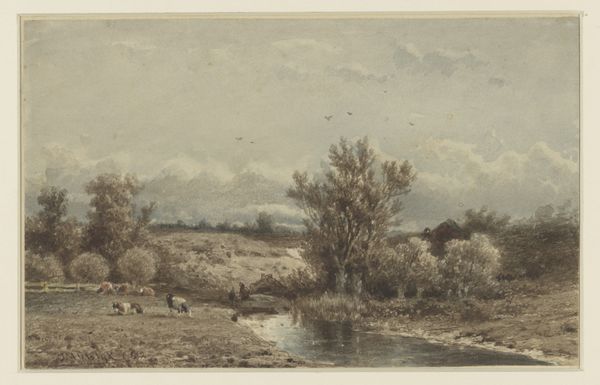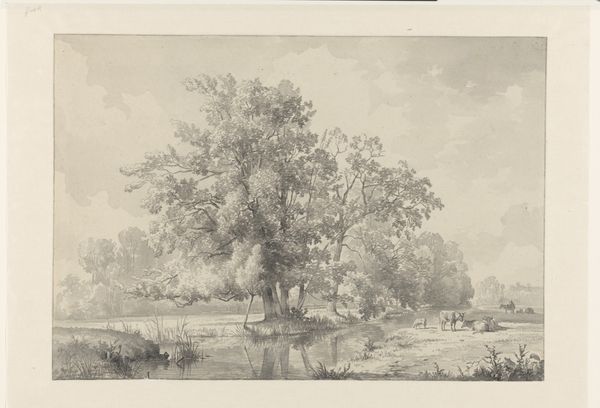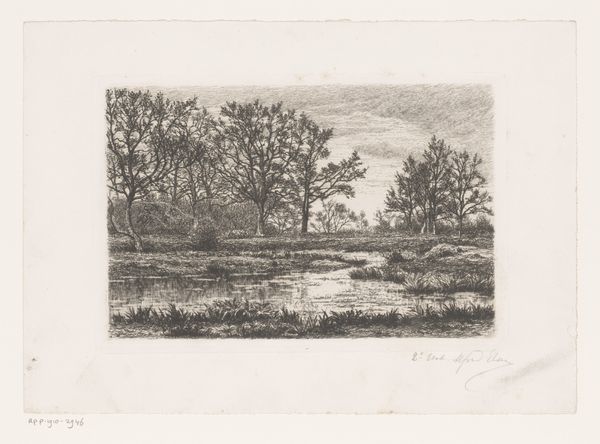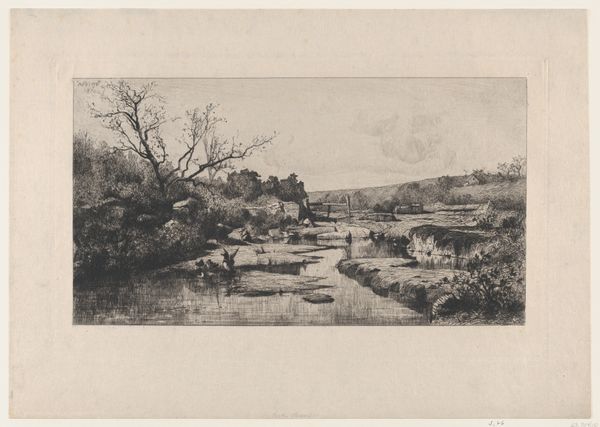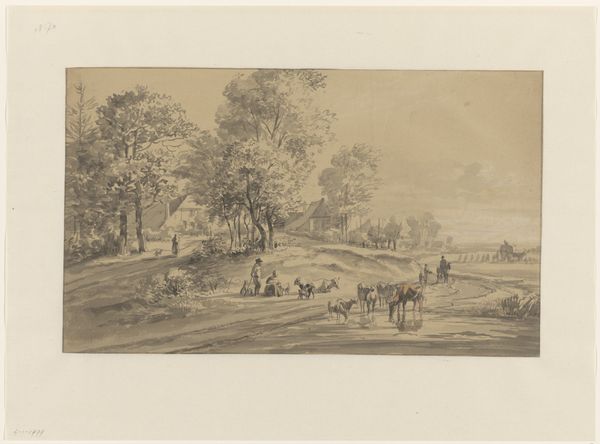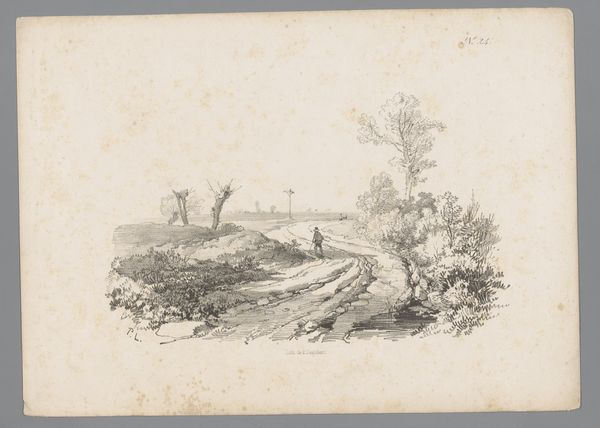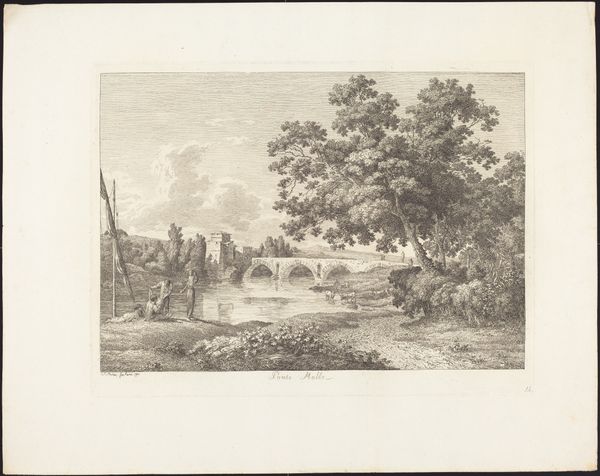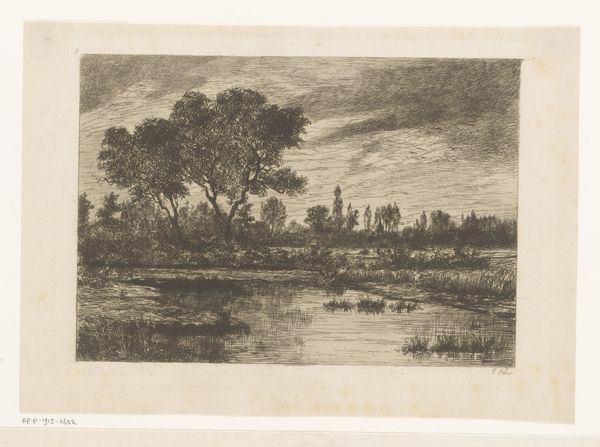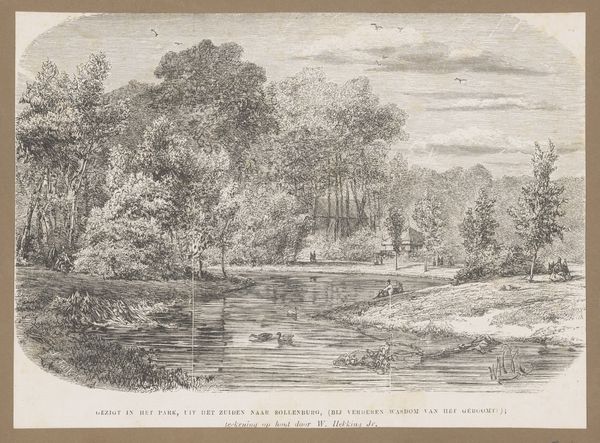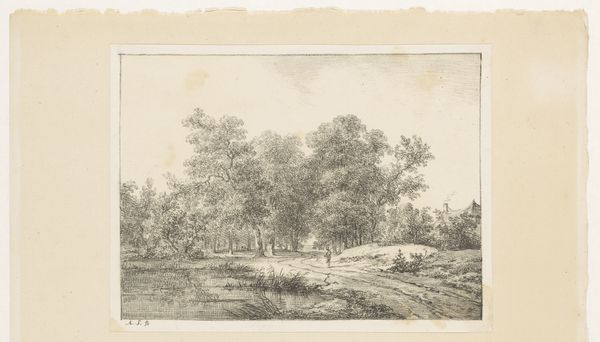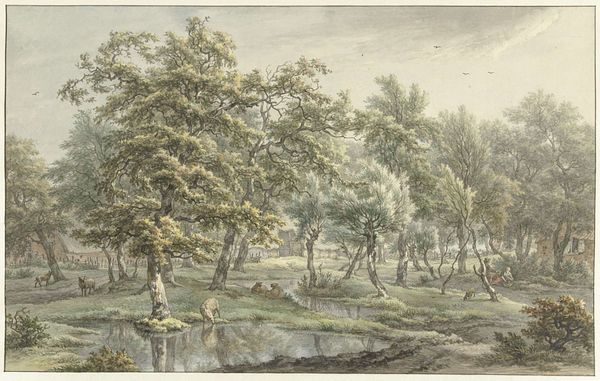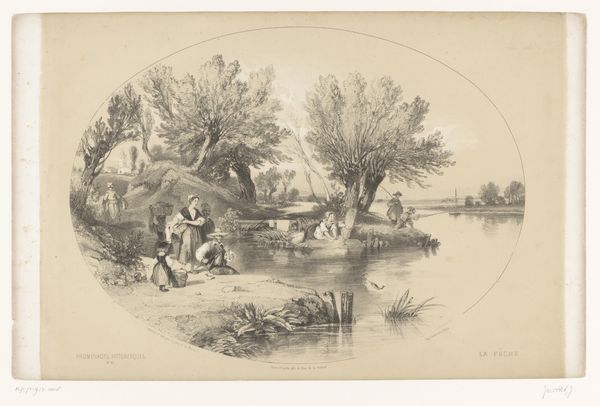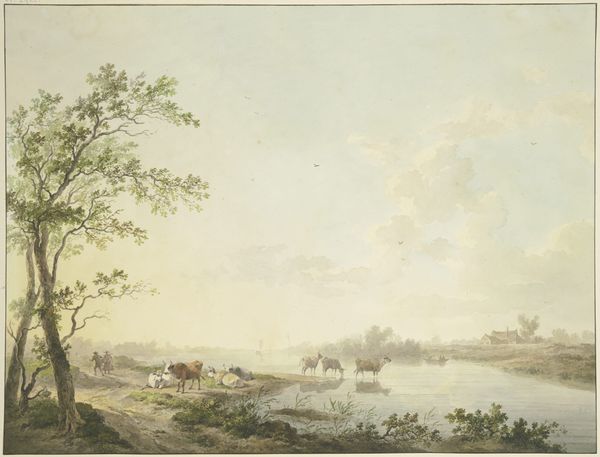
watercolor
#
16_19th-century
#
landscape
#
watercolor
#
watercolor
#
realism
Dimensions: height 254 mm, width 420 mm
Copyright: Rijks Museum: Open Domain
Curator: This watercolor, entitled "Landschap met koeien en water," translating to "Landscape with Cows and Water," dates from 1828 to 1893 and is attributed to Dirk van Lokhorst. Editor: The application of such fluid brushwork to evoke the stillness of the water in juxtaposition with the weight of the looming clouds is impressive, yielding a contemplative and atmospheric impression. Curator: Precisely. Notice how the artist uses compositional techniques, such as employing the tree as a repoussoir, directing the eye into the scene, through color relations. Consider also how he creates horizontal stratification that yields both depth and balance. Editor: The path, the woman, and the water invite us into this humble scenery; it evokes not only natural elements, such as clouds and trees, but an enduring symbolic narrative that involves the nurturing earth and a path leading to, presumably, new opportunities. Is it only coincidence that she follows a trajectory so intimately aligned to a maternal rooted landscape? Curator: One could easily interpret her path that way. Alternatively, we might emphasize the structural rhythm and interplay of form over narrative content, perceiving these elements as formal gestures to activate surface dynamics, color temperature, and a delicate tonal range, so characteristic of Dutch Realism of the period. Editor: Still, realism is never devoid of subjective investment, particularly in landscape painting. Pastoral scenes are invested with associations regarding safety, harmony, perhaps an implicit criticism of a changing industrialized world where urban existence lacked rootedness. Do you think it captures the idea of nature being something 'untamed' like that period loved? Curator: Indeed, though I am careful about imputing symbolic meanings without an analytic support for each component: the angle of each tree branch, for example, and not only as metonymic expressions for nostalgia, but as elements within a cohesive arrangement, functioning almost mathematically in their distribution and execution. Editor: I take your point about the formal integration. Nevertheless, in closing, let’s agree that what resonates most powerfully is this subtle tension between pure design and symbolic echo in which natural objects and elements in it take the symbolism. Curator: Very well. The way the elements converge formally while simultaneously engaging the symbolic domain… a balance masterfully accomplished.
Comments
No comments
Be the first to comment and join the conversation on the ultimate creative platform.
